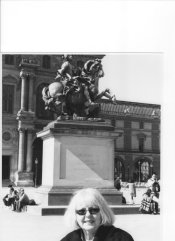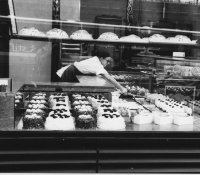Well.....not THE First Time. But the first time i made it work. The first few times, a month or two ago were disappointing. I did not think i would ever get the hang of it.
But then...Pow.!
I can see where some negatives would print "Easier" or "Better" with splitting. It seems i had a few negatives that were fairly high contrast that were hard to print with just the single filter.
If it were high contrast, where the scene was light field with a faded barn, then above that a Cloudy/Stormy sky, that is different. The negative is, kind of, cooperating by spiting the scene with the horizon. But when the scene has high and low contrast all mixed together, it can turn into a Dodging and Burning gymnastic event.
Seems like the split print makes THAT scenario easier to deal with.....AND it also shows where i am making my mistakes with the Traditional Print style. As soon as i got it to look right via split printing, i could see where i might have made some mistakes with Exposure/Filtering on the "normal" print.
Split printing has opened my eyes a bit more to how everything works together...or is supposed to work together if i do my part.
But then...Pow.!
I can see where some negatives would print "Easier" or "Better" with splitting. It seems i had a few negatives that were fairly high contrast that were hard to print with just the single filter.
If it were high contrast, where the scene was light field with a faded barn, then above that a Cloudy/Stormy sky, that is different. The negative is, kind of, cooperating by spiting the scene with the horizon. But when the scene has high and low contrast all mixed together, it can turn into a Dodging and Burning gymnastic event.
Seems like the split print makes THAT scenario easier to deal with.....AND it also shows where i am making my mistakes with the Traditional Print style. As soon as i got it to look right via split printing, i could see where i might have made some mistakes with Exposure/Filtering on the "normal" print.
Split printing has opened my eyes a bit more to how everything works together...or is supposed to work together if i do my part.














